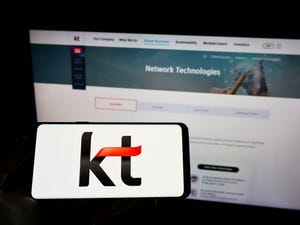FiOS Expansion Is Finito
Verizon CEO McAdam re-affirms to analysts that telco will not expand FiOS' fiber footprint further.

Google may be on a big fiber-to-the-home kick these days, but Verizon Communications is still calling it quits on fiber builds. Eight years after breaking ground on its first FiOS deployment in the Dallas/Fort Worth suburbs, Verizon CEO Lowell McAdam said on Monday that further market expansion for the wireline business isn't likely.
"We've got a great footprint that we can concentrate on," said McAdam, speaking at a Wall Street analyst conference in New York. "I think there are opportunities to partner out-of-market with the companies that are there versus us going in and deploying FiOS."
Verizon Communications Inc. (NYSE: VZ) has been focused on FiOS market penetration rather than expansion for years. But an analyst at the UBS 41st Annual Global Media and Communications Conference questioned whether further activity by Google (Nasdaq: GOOG), and AT&T Inc. (NYSE: T)'s plans to deploy FTTH in Austin, Texas might have changed the company's agenda. McAdam made it clear that he believes there are better places for Verizon to invest its money.
"As I said, it's moving more and more to the broadband side than it is to the TV side," he said. "So I have not seen a case that would make any sense for us to go and open up new markets."
McAdam also said Verizon would continue to push market penetration rates for its twin FiOS TV and FiOS Internet products, which closed out the third quarter at 35% and 39%, respectively. "I don't think 50% is a ceiling for FiOS penetration at all," he said. Verizon now has 5.2 million FiOS TV and 5.9 FiOS Internet subscribers. (See: FiOS Still on Fire.)
On the same day that McAdam spoke at the UBS conference, Verizon also announced its purchase of the content delivery network company, EdgeCast Networks Inc. . (See: Verizon Scoops Up CDN Provider.)
The EdgeCast acquisition has huge implications for Verizon's ability to deliver Internet-based content, and it strengthens the company's case for expanding video services to subscribers across the entire US. In other words, Verizon is making moves to ensure that it won't be limited to the FiOS footprint for video delivery in the future. While the expansion days for FiOS may be over, Verizon's overall infrastructure for video delivery continues to grow.
— Mari Silbey, special to Light Reading Cable
About the Author(s)
You May Also Like












